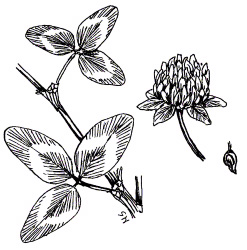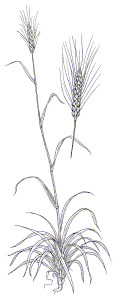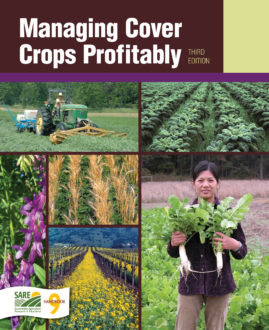Benefits of Cover Crops
Cover crops can boost your profits the first year you plant them. They can improve your bottom line even more over the years as their soil-improving effects accumulate. Other benefits reducing pollution, erosion and weed and insect pressure may be difficult to quantify or may not appear in your financial statements. Identifying these benefits, however, can help you make sound, long-term decisions for your whole farm.
What follows are some important ways to evaluate the economic and ecological aspects of cover crops. These significant benefits (detailed below) vary by location and season, but at least two or three usually occur with any cover crop. Consult local farming groups and agencies with cover crop experience to figure more precise crop budgets.
Cover Crops Cut Fertilizer Costs
- Reduce the need for herbicides and other pesticides
- Improve yields by enhancing soil health
- Prevent soil erosion
- Conserve soil moisture
- Protect water quality
- Help safeguard personal health
Evaluate a cover crop’s impact as you would any other crop, balancing costs against returns in all forms. Don’t limit your calculations, however, to the target cover crop benefit. A cover often has several benefits. Many cover crops offer harvest possibilities as forage, grazing or seed that work well in systems with multiple crop enterprises and livestock.
Spelling it Out

Here’s a quick overview of benefits you can grow on your farm.
Cover Crops Can Cut fertilizer costs by contributing N to cash crops and by scavenging and mining soil nutrients.
Legume cover crops convert nitrogen gas in the atmosphere into soil nitrogen that plants can use. See Nodulation: Match Inoculant to Maximize N. Crops grown in fields after legumes can take up at least 30 to 60 percent of the N that the legume produced. You can reduce N fertilizer applications accordingly. For more information on nitrogen dynamics and how to calculate fertilizer reductions, see Building Soil Fertility and Tilth with Cover Crops. The N value of legumes is the easiest cover crop benefit to evaluate, both agronomically and economically. This natural fertility input alone can justify cover crop use.
- Hairy vetch boosted yield for no-till corn more than enough to cover its establishment costs, a three-year study in Maryland showed. Further, the vetch can reduce economic risk and usually will be more profitable than no-till corn after a winter wheat cover crop (1993 data). The result held true even if corn were priced as low as $1.80 per bushel, or N fertilizer ($0.30/lb.) was applied at the rate of 180 lb. N/A (173).
- Medium red clover companion seeded with oats and hairy vetch had estimated fertilizer replacement value of 65 to 103 lb. N/A in a four year study in Wisconsin, based on a two year rotation of oats/legume > corn. Mean corn grain yield following these legumes was 163 bu./A for red clover and 167 bu./A for hairy vetch, compared with a no legume/no N fertilizer yield of 134 bu./A (400).
- Austrian winter peas, hairy vetch and NITRO alfalfa can provide 80 to 100 percent of a subsequent potato crop’s nitrogen requirement, a study in the Pacific Northwest showed (394).
- Fibrous-rooted cereal grains or grasses are particularly good at scavenging excess nutrients especially N left in the soil after cash crop harvest. Much of the N is held within the plants until they decompose. Fall-seeded grains or grasses can absorb up to 71 lb. N/A within three months of planting, a Maryland study showed (46). Addition of cover crops to corn>soybean and corn>peanut>cotton rotations and appropriate timing of fertilizer application usually reduce total N losses, without causing yield losses in subsequent crops, a USDA-ARS computer modeling study confirms (354).
Cover Crops Reduce the Need for Herbicides
Cover crops suppress weeds and reduce damage by diseases, insects and nematodes. Many cover crops effectively suppress weeds as:
- a smother crop that outcompetes weeds for water and nutrients
- Residue or growing leaf canopy that blocks light, alters the frequency of light waves and changes soil surface temperature
- a source of root exudates or compounds that provide natural herbicidal effects
Managing Pests with Cover Crops describes how cover crops can:
- Host beneficial microbial life that discourages disease
- Create an inhospitable soil environment for many soilborne diseases
- Encourage beneficial insect predators and parasitoids that can reduce insect damage below economic thresholds
- Produce compounds that reduce nematode pest populations
- Encourage beneficial nematode species

grows well in fall, then provides forage and protects soil over winter.
Using a rotation of malting barley>cover crop radish>sugar beets has successfully reduced sugar beet cyst nematodes to increase yield of sugar beets in a Wyoming test. Using this brassica cover crop after malting barley or silage corn substituted profitably for chemical nematicides when nematode levels were moderate (231). A corn>rye>soybeans> wheat>hairy vetch rotation that has reduced pesticide costs is at least as profitable as conventional grain rotations without cover crops, a study in southeastern Pennsylvania shows (174). Fall planted brassica cover crops coupled with mechanical cultivation help potato growers with a long growing season maintain marketable yield and reduce herbicide applications by 25 percent or more, a study in the inland Pacific Northwest showed (394).
Cover Crops Improve Yields by Enhancing Soil Health
Cover crops improve soil by:
- Speeding infiltration of excess surface water
- Relieving compaction and improving structure of overtilled soil
- Adding organic matter that encourages beneficial soil microbial life
- Enhancing nutrient cycling
Building Soil Fertility and Tilth with Cover Crops details the biological and chemical processes of how cover crops improve soil health and nutrient cycling. Leading soil-building crops include rye (residue adds organic matter and conserves moisture); sorghum-sudangrass (deep penetrating roots can break compaction); and ryegrass (stabilizes field roads, inter-row areas and borders when soil is wet).
Cover Crops Prevent Soil Erosion
Quick-growing cover crops hold soil in place, reduce crusting and protect against erosion due to wind and rain. The aboveground portion of covers also helps protect soil from the impact of raindrops. Long-term use of cover crops increases water infiltration and reduces runoff that can carry away soil. The key is to have enough stalk and leaf growth to guard against soil loss. Succulent legumes decompose quickly, especially in warm weather. Winter cereals and many brassicas have a better chance of overwintering in colder climates. These late-summer or fall-planted crops often put on significant growth even when temperatures drop into the 50s, and often are more winterhardy than legumes (361). In a no-till cotton system, use of cover crops such as winter wheat, crimson clover and hairy vetch can reduce soil erosion while maintaining high cotton yields, a Mississippi study shows (35).
Cover Crops Conserve Soil Moisture
Residue from killed cover crops increases water infiltration and reduces evaporation, resulting in less moisture stress during drought. Lightly incorporated cover crops serve dual roles. They trap surface water and add organic matter to increase infiltration to the root zone. Especially effective at covering the soil surface are grasstype cover crops such as rye, wheat, and sorghum-sudangrass hybrid. Some water-efficient legumes such as medic and INDIANHEAD lentils provide cover crop benefits in dryland areas while conserving more moisture than conventional bare fallow (383). Timely spring termination of a cover crop avoids the negative impact of opposite water conditions: excess residue holding in too much moisture for planting in wet years, or living plants drawing too much moisture from the soil in dry years.
Cover Crops Protect Water Quality
By slowing erosion and runoff, cover crops reduce nonpoint source pollution caused by sediments, nutrients and agricultural chemicals. By taking up excess soil nitrogen, cover crops prevent N leaching to groundwater. Cover crops also provide habitat for wildlife. A rye cover crop scavenged from 25 to 100 percent of residual N from conventional and no-till Georgia corn fields, one study showed. Up to 180 lb. N/A had been applied. A barley cover crop removed 64 percent of soil nitrogen when applied N averaged 107 lb./A (220).
Cover Crops Help Safeguard Personal Health
By reducing reliance on agrichemicals for cash crop production, cover crops help protect the health of your family, neighbors and farm workers. They also help address community health and ecological concerns arising from nonpoint source pollution attributed to farming activities.
Cumulative Benefits of Cover Crops
You can increase the range of benefits by increasing the diversity of cover crops grown, the frequency of use between cash crops and the length of time that cover crops are growing in the field.
